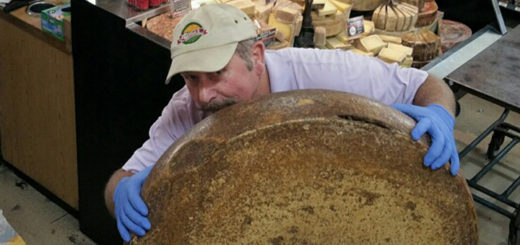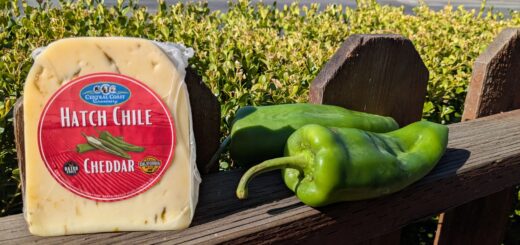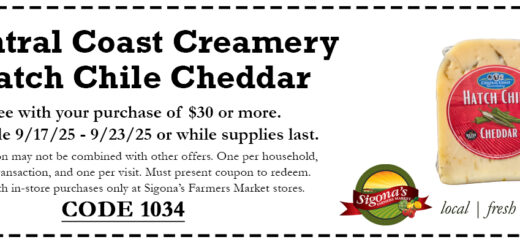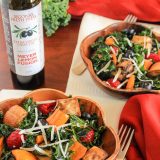Summer’s Treasure: Locally Grown Tomatoes at Sigona's
Summer’s Treasure: Locally Grown Tomatoes
Though delayed by cooler weather, the season’s tomatoes are in and bursting with that long-awaited flavor of summer.
By Robbie Sigona
Raise your hand if you’re still waiting for your garden tomatoes to ripen. Tomato growers in the Bay Area are raising both hands. It’s been a tough summer, what with its cooler than normal temperatures. Most produce has experienced a three-week late ripening delay.
With the recent warm spell, however, tomatoes from within the inland areas of our 150 mile “what’s local” radius have arrived. We’ve welcomed a complete rainbow of Yolo County-grown baby and cherry tomatoes – from the classic red variety to one called a black cherry. We’re also celebrating the arrival of a few beefsteaks – that big, meaty, flavor-packed tomato; it’s one of our favorites. I think our organic “Big Beef” beefsteak tomatoes we get from Phil Foster of Pinnacle Organic Produce in Hollister, Calif., is the best tomato in our store.
I love to hear the oohs and aahs from shoppers as they spot the gorgeously deep red beefsteaks on display. You can simply tell by the color and ripe fragrance, let alone its size, that this tomato is worthy of the admiration.
Beefsteak tomatoes are meaty and firm tomatoes with a light reddish-pink flesh that bursts with a fresh-from-the-backyard flavor. Beefsteaks grow to be very large — one slice is usually big enough for a sandwich because it can be just about as big as slice of bread. Anyone else thinking of a BLT for lunch?
We’ve worked with Phil and his wife Katherine for about 15 years to bring in different organic items, including Swiss chard, tomatoes and heirloom melons from their certified organic ranch. Phil’s Big Beef variety beefsteak tomatoes are, year after year, the tomato I look forward to most. They’re near perfect in every way. They’re just starting to come into season so we expect steady availability soon.

Phil Foster of Pinnacle Organic in Hollister talks to a group of visitors about their soil care program in one of the ranch fields.
One of my favorite characteristics of a beefsteak is that when soft, they maintain a terrific texture that’s not mushy.
Phil tried several different varieties of beefsteaks before they settled on the Big Beef. It grows well at the ranch and thrives under his sustainable farming practices. Phil and his dedicated crew have, over the years, incorporated eco-friendly and sustainable practices at the certified organic ranch.
For example, they use crop rotation and Integrated Pest Management (IPM) to naturally control various pests. They also create their own compost, installed reusable drip irrigation on every acre of the ranch, transitioned all ranch vehicles to run on biodiesel and are slowly but surely adding solar panels to new and existing buildings, a move which has offset electrical energy costs by 50 percent so far.
Small Cherry and grape tomatoes, those flavorful, bite-size treasures, come in a variety of colors and flavors. Besides adding an aesthetic component to dishes, these tiny toms’ can kick a dish up a notch with their complex, fresh flavor. Their range of flavors results from a variance in chemical make up – some are more acidic, for example – to being as simple as where the tomato is grown.
Most of our cherry tomatoes come from organic farmers Jim & Deborah Durst in Yolo County, Calif., northwest of Sacramento. Jim and Deborah organically farm 600 acres, which includes 11 varieties of cherry tomatoes. They farm in the Hungry Hollow area of Yolo County, a small microclimate area created by the presence of the Dunnigan Hills on one side and the Capay Valley on the other. The mountain range disrupts the cloud pattern so this area tends to stay drier than plots just five miles away.
This microclimate influence, combined with Durst’s soil maintenance and farming techniques make for fantastic tomatoes.
“Not many people realize what happens in the soil, but healthy soil is one of the most important factors of farming,” said Jim. “Healthy soil makes for healthy plants and good production, and helps plants withstand attacks from pathogens, insects and resulting disease. We do a lot of soil sampling to keep a good picture of what is going on in the soil and plant production cycle, so we’re able to get plants what they need as they mature.”
Jim Durst is a fourth-generation farmer, but a first generation vegetable farmer. His great grandpa’s family emigrated in the mid-1800s from Switzerland by way of Wisconsin and were part of the grain and livestock scene. It wasn’t until the distribution of surface water for irrigation made it to Yolo County that it was possible to grow other crops.
“Our farm is more or less a garden that got away from us,” said Jim. “I never pictured myself as part of the farming scene, but having grown up with access to farm-fresh produce, you really yearn for fresh melons, corn and tomatoes, so, we planted a garden and one thing led to another. If I’d been told 25 years ago I’d be here today, I wouldn’t have believed it.”
Many of the small tomatoes we bring in from Durst are heirloom varieties; some with a documented lineage dating back to the late 1700s – a testament to their outstanding quality and flavor. These varieties have been scrutinized by the most the sophisticated palates, and time and time again, from generation to generation, they’ve earned their keep with gardeners, farmers and consumers alike.
It’s the healthy soil that’s helped, for sure. Even this season, despite the widespread cooler weather, Jim says his plants are healthy and staring to step up production.
“The weather has been odd and very difficult, causing some rarities in our fields,” said Jim. “We had a lot of blossoms in the spring, but maybe two in 10 set fruit. In general, our cherry tomato harvest starts around June 20, but this year the first ripe tomato came around on July 7.”
Better late than never, right? We think so! Next time you’re at Sigona’s, see if you can identify some of the following small tomato varieties. Pick up a basket or two to try your hand at my Uncle Carmelo’s Mini Charm bruschetta made with Mini Charm tomatoes (a huge hit at a recent dinner party) or make caprese skewers with fresh basil and mozzarella. There are more tomato recipes on our blog, too.
- Black Cherry: These blackish-red cherries have a rich flavor that is more savory than sweet. They have a unique flavor and color that adds an interesting twist to fresh salads. The variety is said to have originated in Russia/Ukraine.
- Mini charm: This variety is very flavorful with a high sugar content. Excellent for salads and snacks. Carmelo’s favorite use of these little gems is in a bruschetta with fresh press olive oil spread on a grilled baguette.
- Sweet 100: These tomatoes are true to their name. The plants produce 100s of sweet, bite-size cherry tomatoes that are extra high in Vitamin C. The best part about this variety is that they’re usually small enough to eat in just one bite. Plus, the flavor explodes in your mouth. Best use: caprese skewers.
- Sungold: More and more tomato lovers are professing their love for this variety, naming them their favorite cherry tomato of the summer. This variety stays firm when ripe so they’re nice sliced, lightly sautéed in oil & garlic, tossed with pasta and topped with slivered basil. Plus, their color adds eye appeal.
- Yellow grape: This variety is described as delightfully sweet but refreshing. Its fruity flavor is nice on its own or added to a butter lettuce salad with grilled chicken and feta cheese.
- Yellow Pear: Also known as a Beam’s yellow pear, this variety is firm with a citrus-like tartness. When served whole, their shape adds an interesting element to salads, but diced they are fantastic in fruit salsas. This American heirloom dates back to early 1800s.
- Red Pear: The first thing written about the Red Pear in most publications is that this variety has “incredible taste.” It’s one of the oldest American heirloom varieties and is loved for its sweet and juicy flesh. Their high acid content presents that good, old fashioned flavor that makes them good for snacking or salads. This American heirloom dates back to the 1700s.













